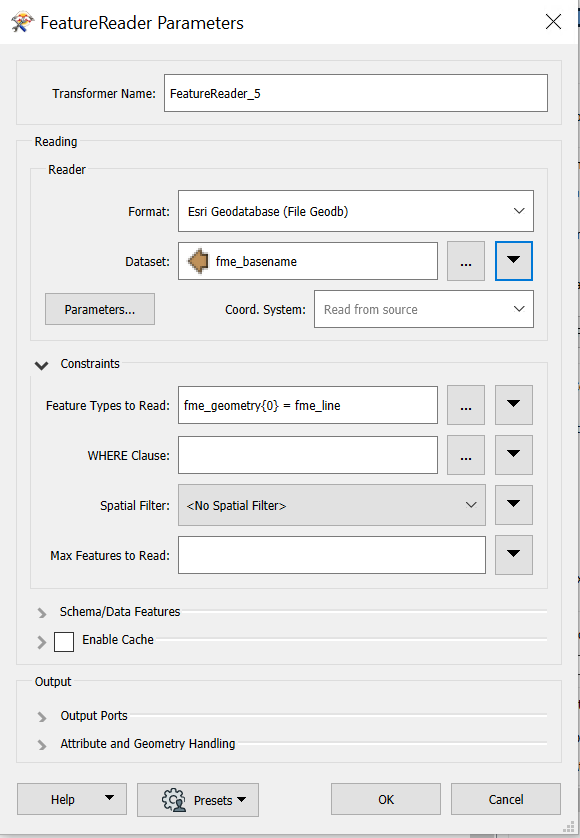Hello,
I'm currently reading multiple data sources with a File/DIRECTORY reader and then using the path to read data whether its from a gdb, shp or json. I'm having trouble understanding how I can manage to read ONLY features that have a POLYLINE geometry. I'm guessing there is something to do in the constraint parameters of a FeatureReader transformer but, for the life of me, I can't seem to figure it out.

 Thanks for your help!
Thanks for your help!
Anne-Marie





 See also the attached workspace template (FME 2020).
See also the attached workspace template (FME 2020).